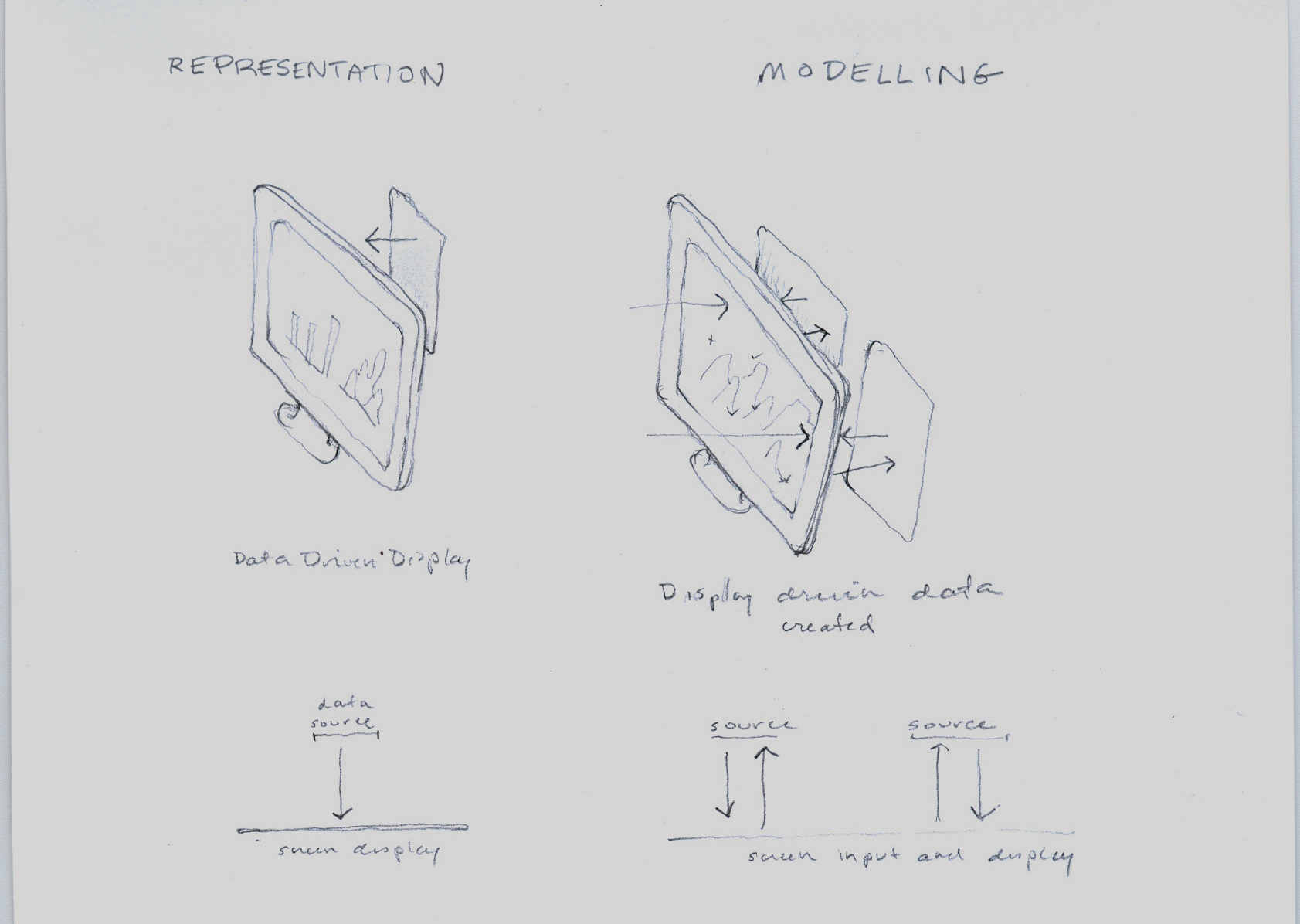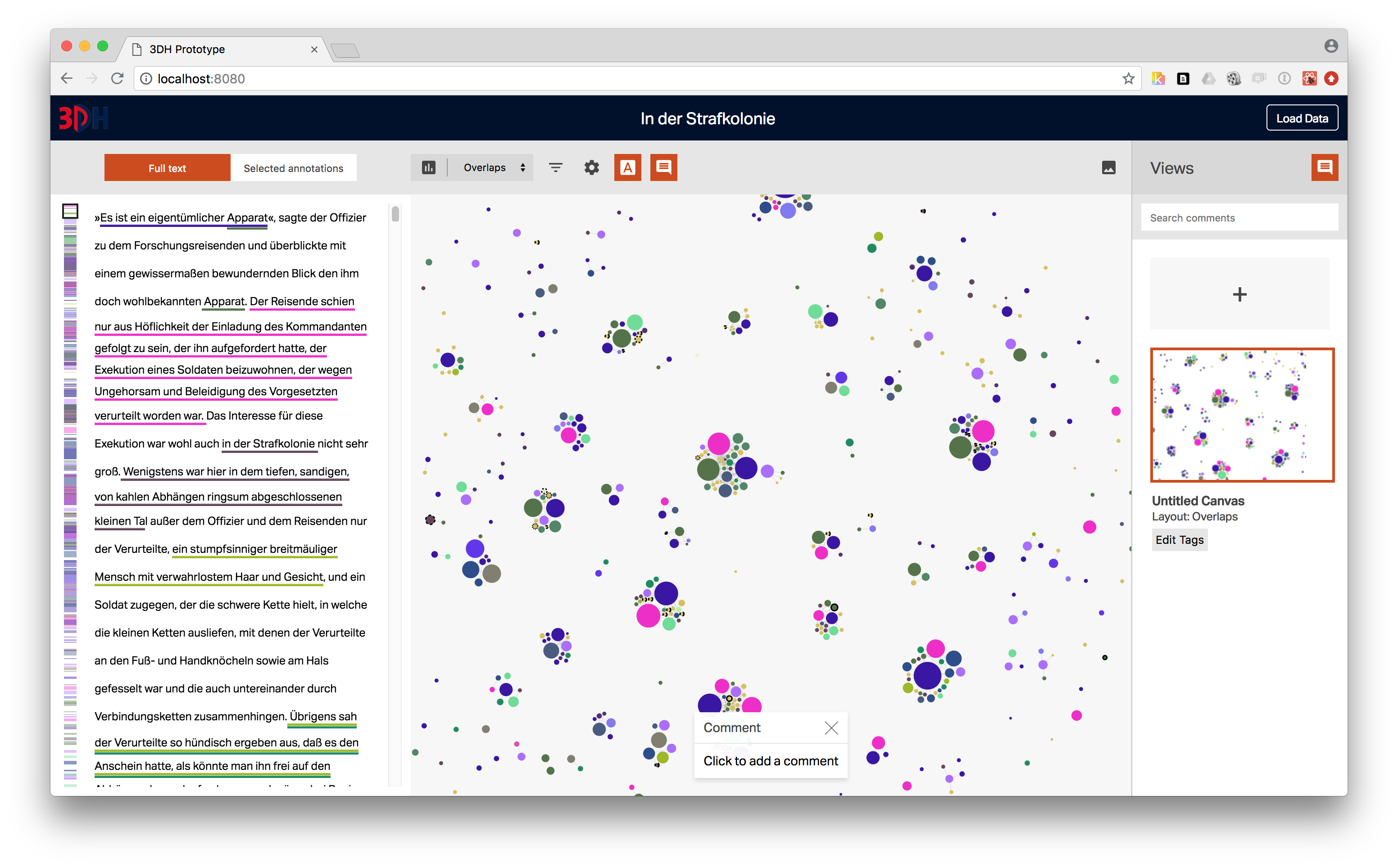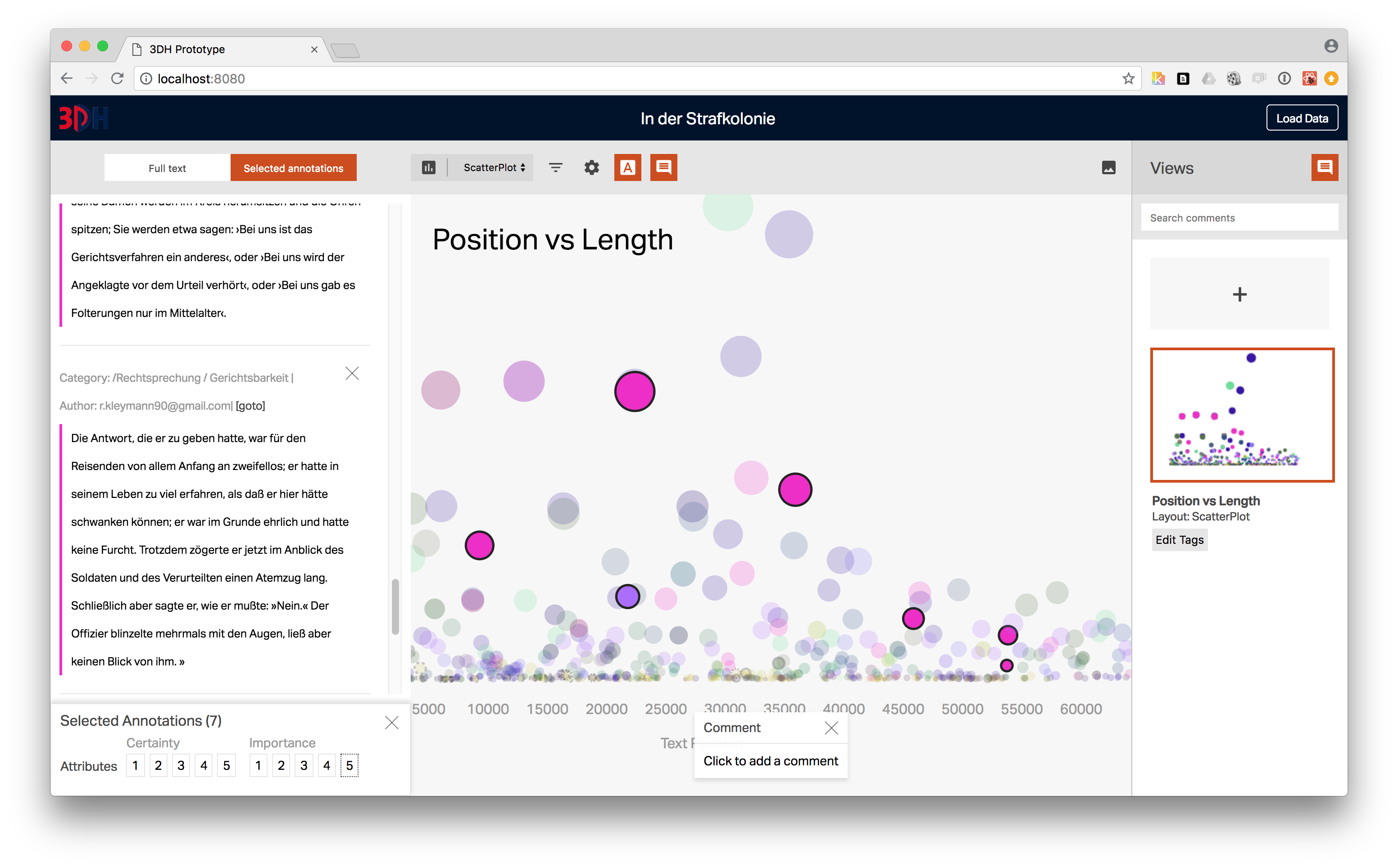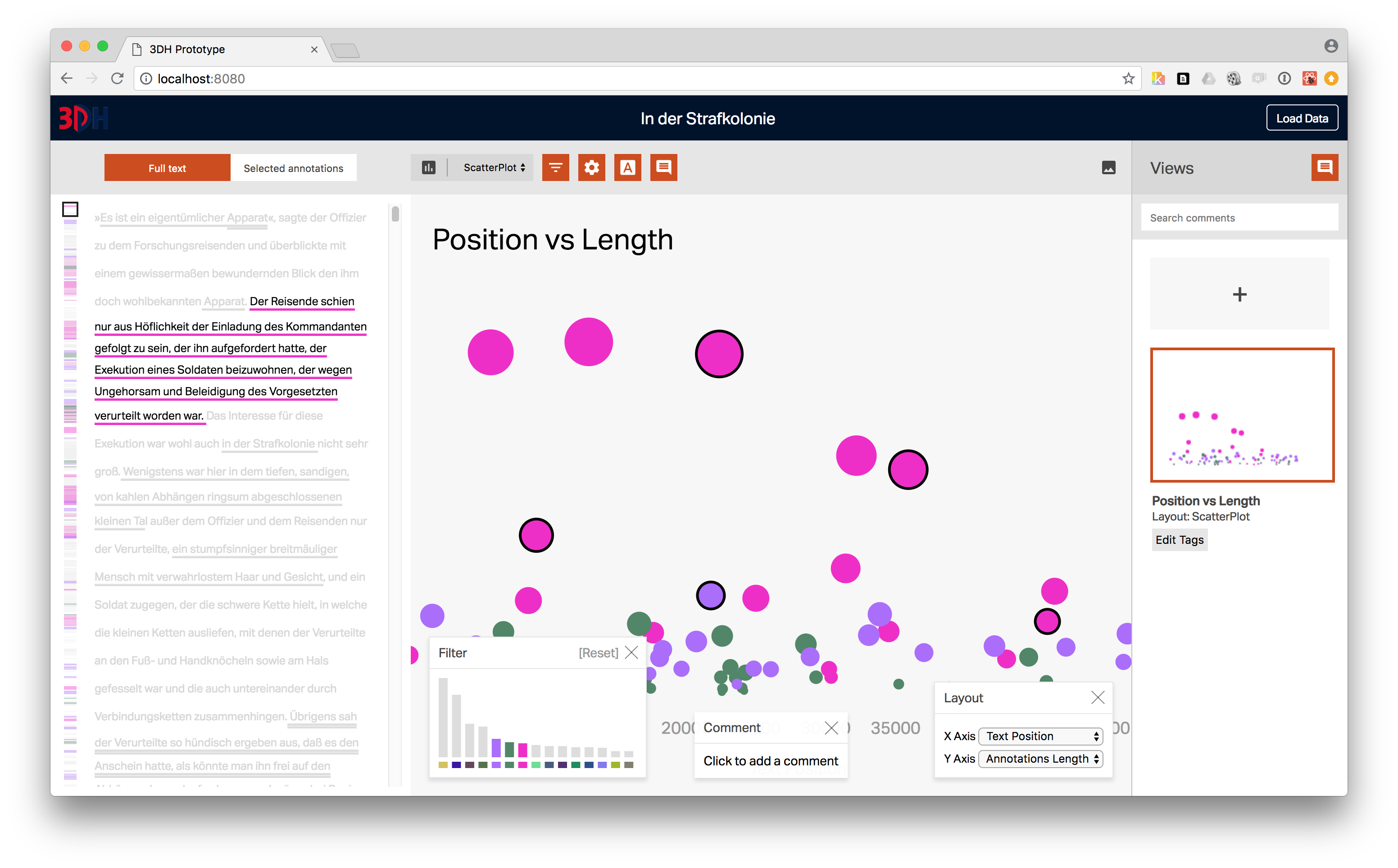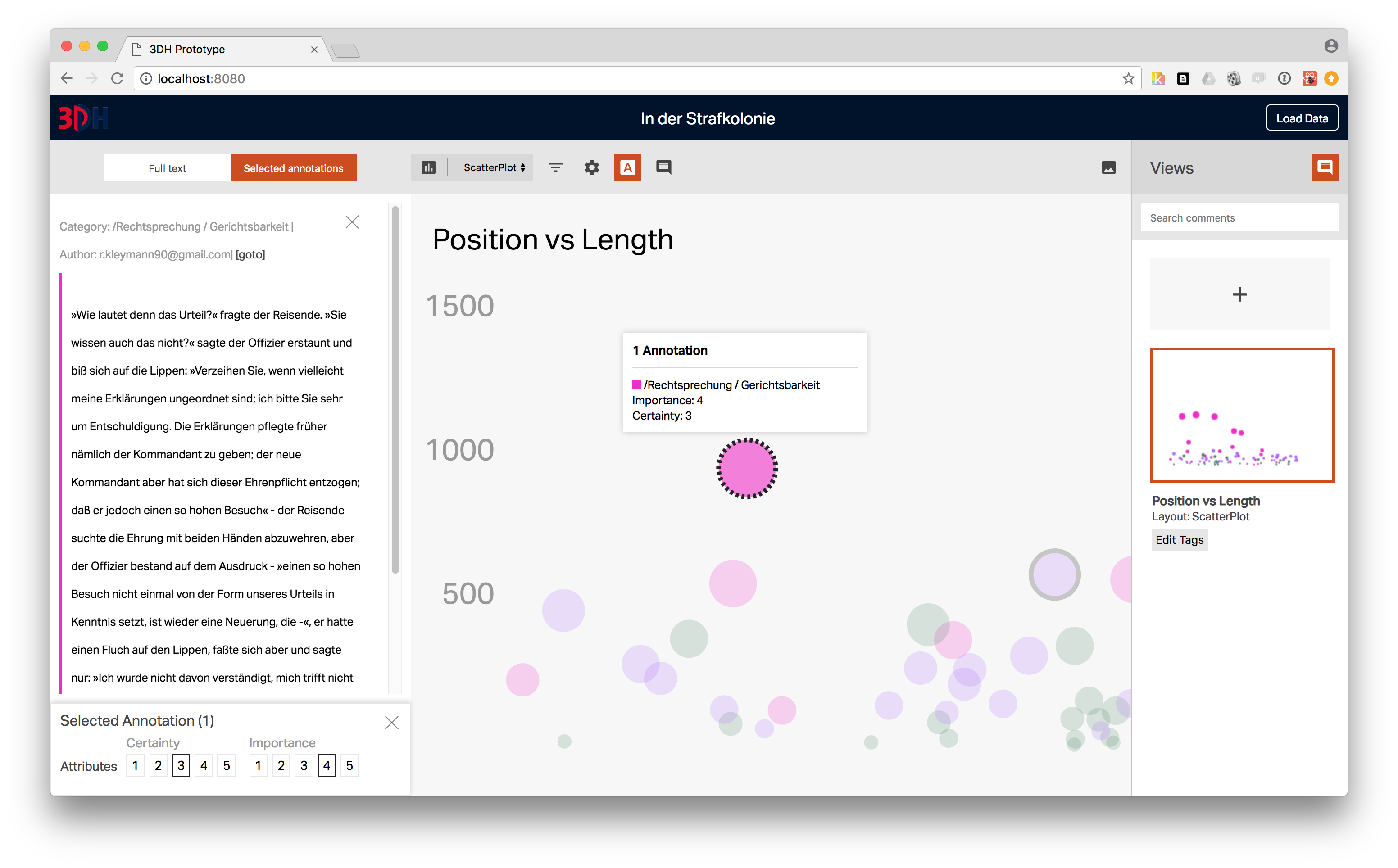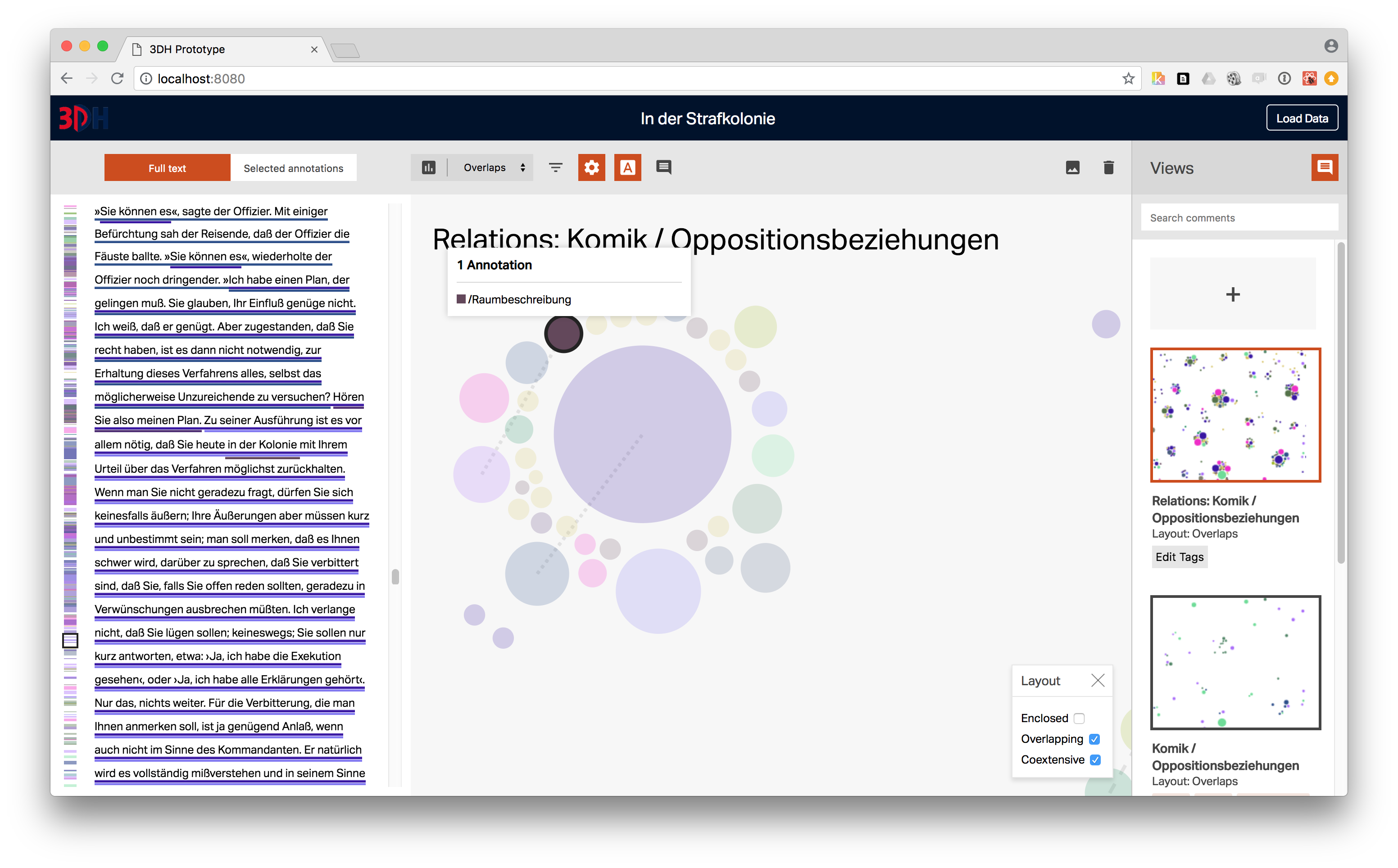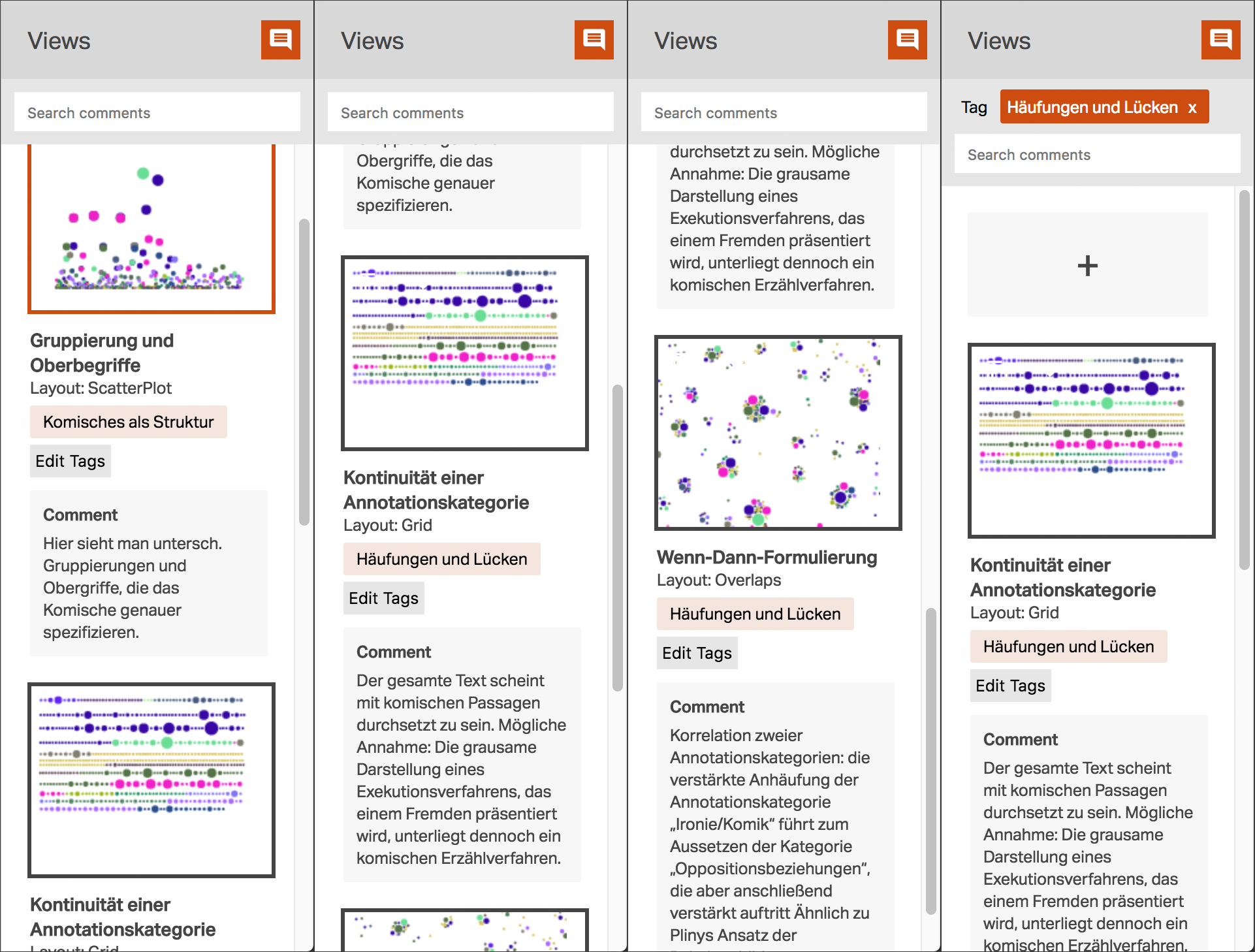Volume 15 Number 2
Towards Hermeneutic Visualization in Digital Literary Studies
Abstract
In this article, we present our reflections on hermeneutic data visualizations for digital literary studies. Hermeneutic approaches in the digital humanities have been rather agnostic about the epistemological premises of hermeneutic theory. These can be summarized as (1) differentiation author/text, (2) hermeneutic circle and (3) dependency text/recipient. In this article, we present the concept of hermeneutic visualization as a means of bridging the gap between “classic” literary hermeneutics and the emerging practice of digital literary hermeneutics. Since data visualization is based on epistemological premises stemming from the natural or social sciences, it is not well-equipped to meet hermeneutic demands. In this article, we argue that the digital humanities can meet hermeneutic demands through a critical interface and visualization concept. We discuss four postulates that can be used as guidelines and help transform “more traditional” data visualization into hermeneutic visualization, while respecting the epistemological foundations of hermeneutic theory. We demonstrate the usefulness of the postulates with an interactive prototype Stereoscope designed to support them.[1]
1. Introduction
By clarifying the premises and postulates for hermeneutic visualization, we address two research desiderata. First, a systematic elaboration of the implicit premises of hermeneutic text interpretations is still missing. What premises of hermeneutics do we have to consider when we want to use visualizations as tools for the interpretation process? We propose four premises for hermeneutic visualizations. These can be summarized as (1) differentiation author/text, (2) hermeneutic circle and (3) dependency text/recipient.The use of computer-supported, interactive, visual representations of text annotations to manipulate, reconfigure and explore them in order to create visual interpretations that can be used as arguments and allow a critical reflection of the hermeneutic process in light of a research question.
2. From the Hermeneutic Foundation to Digital Hermeneutic Visualizations
2.1 Interpretation, Theory, Method, and Argument in Literary Studies
[Nünning and Nünning 2010, 6]. Literary theories provide not only specific epistemological implications regarding, for example, the concept of authorship or the relevance of contexts, but also contain an implicit idea of meaning. During decades of theoretical debates and throughout different turns, the parameters indicating or representing meaning have shifted (cf. [Jannidis et al. 2003, 7]). Besides the epistemological implications, this also changed the definition of what actually constitutes a research object as such.[3] Methods, however, differ from theories. A literary method is a procedure for accomplishing knowledge in a research inquiry. Methods can be characterized as purposeful and rule-based (cf. [Nünning and Nünning 2010, 8]; [Winko 2003, 581]). A theory could not only encompass one or a set of several methods, but also demand the application of methods with varying degrees of specification (for example, deductive or dialectical methods compared to the more general operations such as reading or generating hypotheses).explicit, elaborated, logical structured system of categories in order to describe, explore or explain certain issues [of texts]
2.2 Foundations of Literary Hermeneutics
- The differentiation between intentions of author and text
- The holistic premise (hermeneutic circle)
- The dependency between text and recipient
2.3 Conceptions of Digital Literary Hermeneutics
The dialogue surrounding hermeneutics seems not to have developed fully yet in digital humanities – references to hermeneutics are scant and often at a concrete level of the practice of text interpretation, such as when Katherine Hayles (2012) uses the phrase “hermeneutic close reading”. Yet from several paragraphs and sections in the literature the emergence of a debate seems traceable.
Notetaking, and this kind of juggling of notes to discover previously unrecognised patterns and relationships and to stimulate new ideas is one of the long established methods of scholarship.
2.4 Towards Hermeneutic Visualizations
The digital humanities must not lose sight of the design of artifacts as a critical act, one that may reflect insights into materials and advance an argument about an artifact’s role in the world. Our purpose here is to follow the implications of a hermeneutical approach to design for digital humanities projects that entail the strategic prototyping of digital artifacts.
By “hermeneutic markup” I mean markup that is deliberately interpretive. It is not limited to describing aspects or features of a text that can be formally defined and objectively verified. Instead, it is devoted to recording a scholar’s or analyst’s observations and conjectures in an open-ended way.
3. Hermeneutic Visualization: Four Postulates
4. The Four Postulates Used as Guidelines for Prototypical Implementation
Text
Canvas
Views
Using the four postulates as guidelines for implementation
5. Conclusions
6. Acknowledgements
7. Links
- Article “Parallax” in Oxford English Dictionary. Available at: https://en.oxforddictionaries.com/definition/parallax
- https://voyant-tools.org/
- https://github.com/computationalstylistics/stylo
- https://gephi.org/
- http://tapor.ca
- http://threedh.net/
- http://catma.de/
- https://github.com/janerikst/stereoscope
Notes
Works Cited
Recommendations
DHQ is testing out three new article recommendation methods! Please explore the links below to find articles that are related in different ways to the one you just read. We are interested in how these methods work for readers—if you would like to share feedback with us, please complete our short evaluation survey. You can also visit our documentation for these recommendation methods to learn more.
SPECTER Recommendations
Below are article recommendations generated by the SPECTER model:
- Humanities Approaches to Graphical Display, 2011, Johanna Drucker, Breslauer Professor of Bibliographical Studies Department of Information Studies, UCLA
- The Fold: Rethinking Interactivity in Data Visualization, 2020, Viktoria Brüggemann, University of Applied Sciences Potsdam; Mark-Jan Bludau, University of Applied Sciences Potsdam; Marian Dörk, University of Applied Sciences Potsdam
- Narrelations — Visualizing Narrative Levels and their Correlations with Temporal Phenomena, 2019, Hannah Schwan, University of Applied Sciences Potsdam; Janina Jacke, University of Hamburg; Rabea Kleymann, University of Hamburg; Jan-Erik Stange, ATLAS.ti; Marian Dörk, University of Applied Sciences Potsdam
- Racism in the Machine: Visualization Ethics in Digital Humanities Projects, 2019, Katherine Hepworth, University of Nevada, Reno; Christopher Church, University of Nevada, Reno
- Placing Graphic Design at the Intersection of Information Visualization Fields, 2019, Yvette Shen, Ohio State University
DHQ Keyword Recommendations
Below are article recommendations generated by DHQ Keywords:
- Readies Online, 2011, Craig Saper, University of Maryland, Baltimore County
- Visualization of Categorization: How to see the wood and the trees, 2023, Ophir Münz-Manor, The Open University of Israel; Itay Marienberg-Milikowsky, Ben-Gurion University of the Negev
- In a test bed with Kafka. Introducing a mixed-method approach to digital stylistics, 2018, J. Berenike Herrmann, Basel University
- Narrelations — Visualizing Narrative Levels and their Correlations with Temporal Phenomena, 2019, Hannah Schwan, University of Applied Sciences Potsdam; Janina Jacke, University of Hamburg; Rabea Kleymann, University of Hamburg; Jan-Erik Stange, ATLAS.ti; Marian Dörk, University of Applied Sciences Potsdam
- A Digital Humanities Approach to Narrative Voice in The Secret Scripture: Proposing a New Research Method, 2014, Sonia Howell, University of Notre Dame, USA; Margaret Kelleher, University College Dublin (UCD); Aja Teehan, National University of Ireland, Maynooth, Ireland; John Keating, National University of Ireland, Maynooth, Ireland
TF-IDF Recommendations
Below are article recommendations generated by the TF-IDF Model:
- Metaphors in Digital Hermeneutics: Zooming through Literary, Didactic and Historical Representations of Imaginary and Existing Cities, 2017, Florentina Armaselu, University of Luxembourg; Charles van den Heuvel, Huygens ING, The Hague, Netherlands; University of Amsterdam
- In a test bed with Kafka. Introducing a mixed-method approach to digital stylistics, 2018, J. Berenike Herrmann, Basel University
- Digital Humanities, Postfoundationalism, Postindustrial Culture, 2014, James Smithies, University of Canterbury
- Methods of quality, quality of methods. What does Roberto Busa have to communicate to digital humanists in the 21st century? From hermeneutics to performativity., 2017, Marinella Testori, King's College London
- Narrelations — Visualizing Narrative Levels and their Correlations with Temporal Phenomena, 2019, Hannah Schwan, University of Applied Sciences Potsdam; Janina Jacke, University of Hamburg; Rabea Kleymann, University of Hamburg; Jan-Erik Stange, ATLAS.ti; Marian Dörk, University of Applied Sciences Potsdam

